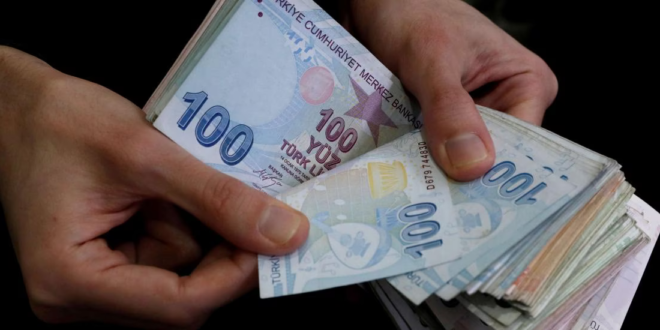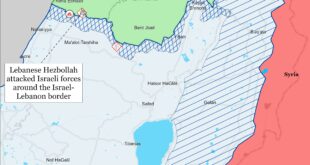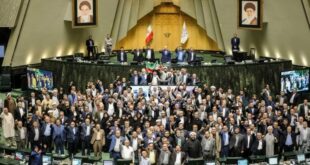Turkish President Recep Tayyip Erdoğan is still insisting on false economic premises, including a theory that higher interest rates cause inflation; a policy stance that has led to sharp losses for the lira, said Güven Sak, a former member of the Monetary Policy Council of the Central Bank of Turkey.
Erdoğan’s government is saying new dollar-indexed deposit accounts, introduced in December, and a “managed float” of the lira will succeed in steadying the currency after it slumped 44 percent against the dollar last year, but there is no chance of success, Sak, who is president and CEO of TEPAV Global in Washington D.C., said in a column for the Moshe Dayan Center of Tel Aviv University.
The central bank has neither enough foreign currency reserves to credibly manage the float nor the ability to raise its policy rate, Sak said. What is needed is real administrative reform to re-establish a policy unit within the Turkish administration, which will then need policies to lower credit default swap (CDS) risk premiums to underpin a capital-intensive economic transformation process, he said.
A reproduction of the article follows below:
In 2001 Turkey was hit by one of its most significant economic crises. As a founding external member of the newly established Monetary Policy Committee of the Central Bank of Turkey (CBRT) I had a chance to witness the adoption of the stabilization package that was designed at the time by Kemal Derviş, an economist at the World Bank. In the end, the stabilization packaged worked well under the auspices of the IMF thanks to the adoption of its orthodox economic policies.
Inflation at the outset was at around 80 percent, but by 2005 it had declined to around 8 percent. Then Prime Minister, President Recep Tayyip Erdoğan who came to power in 2002, adopted the IMF-backed economic reform package of the previous government, and famously dropped six zeros from the Turkish lira. Turkey’s economy was finally stabilizing.
What was the secret formula? How did this policy initiative work when so many others had failed?
It always helps to have sound monetary and fiscal policies. Financial stability, together with the political stability that came about with the 2002 election of the AKP and Erdoğan to power, operationalized the 1996 Customs Union arrangement with the EU. Turkey’s subsequent EU candidacy and the reforms required to begin this process led to a rapid structural change in the Turkish economy. Turkey had become the second industrial country in the Middle East, after Israel.
There is a tendency for many Turkish voters to give all the credit for the economic successes the early 2000s to the AKP alone. Buoyed by repeated election victories since then, the now-president Erdoğan may end up putting the zeros back into the lira.
On Monday, January 31, 2022, the Central Bank of Republic of Turkey (CBRT) sent its usual explanatory letter to the government as to why it has missed its inflation target in 2020 yet again. The Central Bank missing its annual inflation target is not something new. Yet never in the last nineteen years, when it has been mandatory for CBRT to write a letter to the government, has the CBRT been this far off the mark: its target was 5 percent and Turkey actually got 49 percent inflation.
And we know that is only the beginning. The wholesale price index (WPI) was at 94 percent whereas the consumer price index (CPI) reached 49 percent in January 2022. The market expectation for inflation in mid-2022 is now at around 60 percent and is rising as the CPI is expected to move towards WPI.
Why are inflationary expectations rising now? One reason is the rapid depreciation of the Turkish Lira in 2021. The currency lost 83 percent of its value between January 2021 and January 2022. In early January of 2018, you could get $53 with your 200 lira banknote, the largest lira-denominated banknote in Turkey. In early January 2021, you got $27 for it, and now it is worth $15. Needless to say, this causes a lot of inflation.
If President Erdoğan sticks to his highly controversial “interest is the cause and inflation is the reason” dictum, the bottom has fallen out. Just look at how negative the real rate of return on lira could be. Today, the CBRT policy rate was at 14 percent while CPI at the end of 2021 reached 49 percent. Monetary expansion is leading to higher and higher inflation. None of the economics here is very complicated.
Yet this time around, Turks have the freedom to hold retail FX deposit accounts, something that was not available to them in the 1970s. For the first time since 2001, the share of FX deposit accounts in total commercial bank deposits once again went over 68 percent in 2021, higher than it was in 2001 crisis. Despite the seeming policy reversal, this figure is still at record levels.
The policy reversal came in early December with the change of the economy minister. It started with the introduction of a dollar indexed lira deposit account and a so-called ‘managed float’ of the currency. Is there any chance of success here? No. CBRT neither has enough reserves to credibly manage the float nor the ability to raise its policy rate. The president is insisting on his false premises.
Could FX-indexed lira deposit accounts change Turkish appetites for holding US dollars over Turkish lira? No. It’s not about the lira, it’s about the credibility of the current economic policy framework, which does not exist. What we have is a series of tactics to give the vague impression of an economic policy. It is all about dealing with the symptoms, not focusing on the cause.
So, what has changed so dramatically in Turkey that led to this scenario with President Erdoğan now putting those zeros back into the lira? He did well in the past, didn’t he? Why not now? It’s all directly related to the new decision-making mechanism of the Presidential system that came into effect with the 2018 elections.
Turkey abolished its policymaking capacity with the administrative “reform” at that time. How? In the past, undersecretaries with their deputies were the gate keepers acting as the brain trust in ministries. Policymaking in the Turkish administrative system was performed at the under-secretariat level, with ministers coming and going depending on election results.
The 2018 administrative “reform” has abolished under-secretariats by either demoting the existing undersecretaries and deputy undersecretaries or pushed them to passive jobs outside of their ministries, effectively attempting to wipe out the memory of Turkish bureaucracy. Without alternative policy formulation mechanisms established, policy analysis and policymaking have become effectively impossible in Turkey. The presidential system becomes an arrangement for one man to sign all the papers.
The terms of office for economic policy makers have effectively been shortened since the 2018 administrative reform. For finance ministers, the average term of office declined from 58.2 months to 14.4 months. For CBRT governors, the average term declined from 60.6 months to 17.6 months. The steeper the decline in term of office, the more problematic the area appears to be. Now the presidency of the Turkish Statistics Institution has been in the spotlight. Expect sudden late-night announcements.
No wonder the risk Premium on Turkish assets has already been high and rising since the administrative “reform” of 2018. The cost of funding for the Turkish economy is quickly rising. Turkey is a country with a structural savings shortage, as exemplified by current account deficits. A jobs and growth agenda in Turkey requires higher foreign savings to be wired into the country.
That’s why Turkey was one of the first countries in the 1980s to focus on financial liberalization policies. The 1980s were the years for change in the nature of fund flows between countries, from government-to-government to market-based fund flows. This, by the way, couldn’t have happened without the development of Euro-Dollar markets.
It is not only the Credit Default Swap (CDS) risk premiums that are rising, but there is also a rapid decline in net FDI inflows into Turkey. Note that for the first time since the 2001 crisis, foreign direct inflows into Turkey, the net of real estate investments and outward direct investments has once again turned negative. The figures indicate the importance of the rule of law, as well as perceptions regarding the independence of the judiciary. The erosion is significant since 2018.
Against all odds, it’s the dynamism of the Turkish corporate sector that makes the country continue to work wonders. Turkey had a Southeast Asian post-pandemic recovery process with the 2021 growth rate reaching somewhere around 10 percent. Turkish exports went beyond the $200 billion mark for the first time. Turkish exports increased around 20 percent between June 2019 to June 2020 while that of China has increased by more than 30 percent. Just have a look at the graph below to see how Turkey dealt with pent up import demand in the post-pandemic period. There is a cost to all this: after two decades, the incidence of poverty in Turkey is rising once again. This trend emerged in 2019, a year after the administrative “reform”.
Think about Turkey’s potential if it had a comprehensive and coherent economic policy framework. The Green New Deal is a great opportunity for Turkey to have a strong economic policy framework commensurate with its trading partners. As 60 percent of Turkish exports are going to G7 countries, any substantial policy change among them requires Turkey to adjust. Now that the country has finally ratified the Paris Agreement and announced 2053 as its net zero year, it needs an ambitious economic policy framework. Why? Green transformation is a capital-intensive economic transformation in a country with a structural savings deficit. Is it doable? Yes, but it won’t be easy.
For job creation and growth, the Turkish economy requires real administrative reform to re-establish a policy unit within the administration. It will then need policies to lower CDS risk premiums, which is essential to a capital-intensive economic transformation process. Only then can Turkey find its way back to normality.
 Eurasia Press & News
Eurasia Press & News




